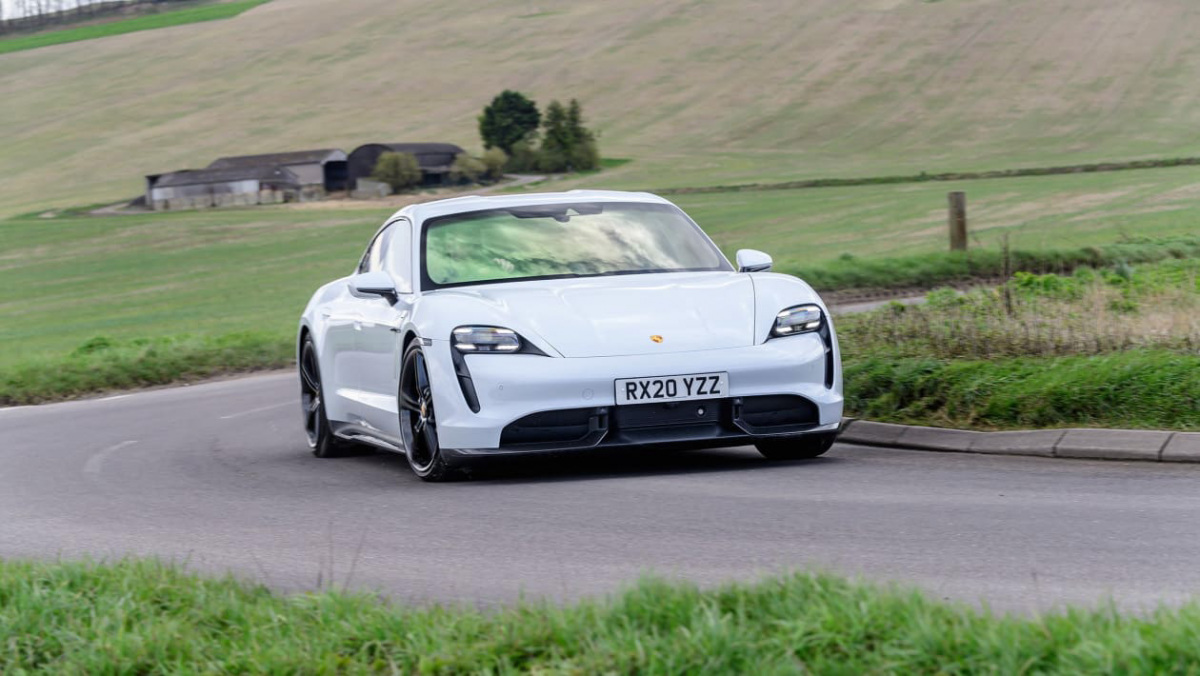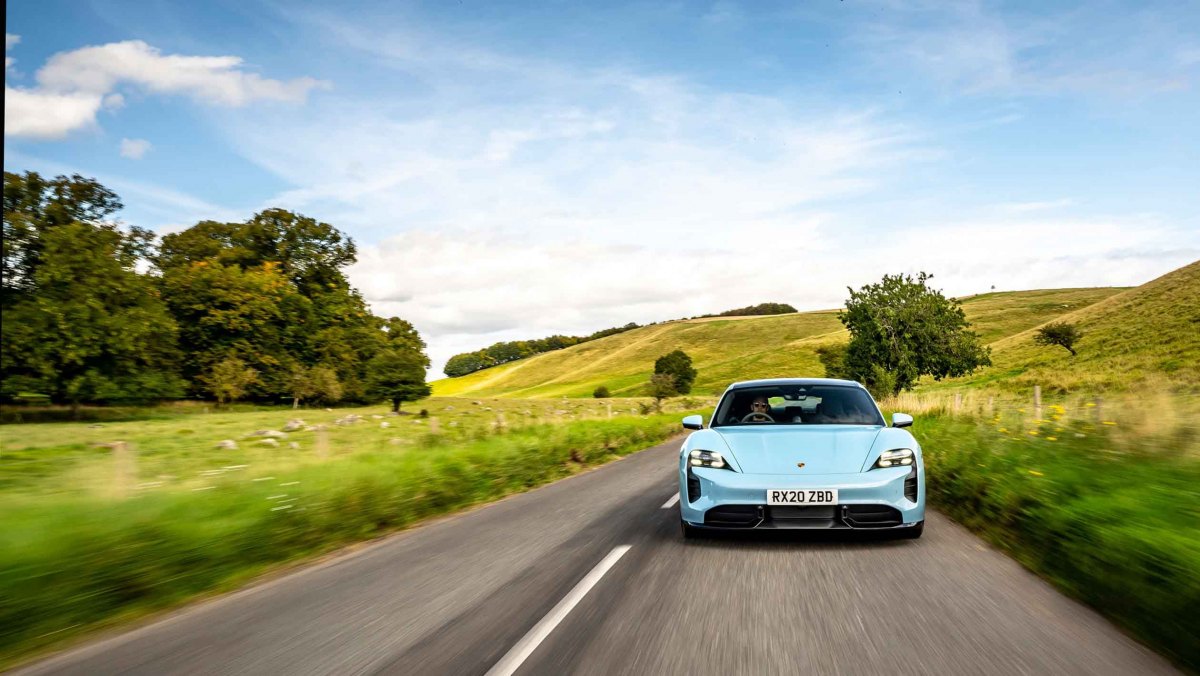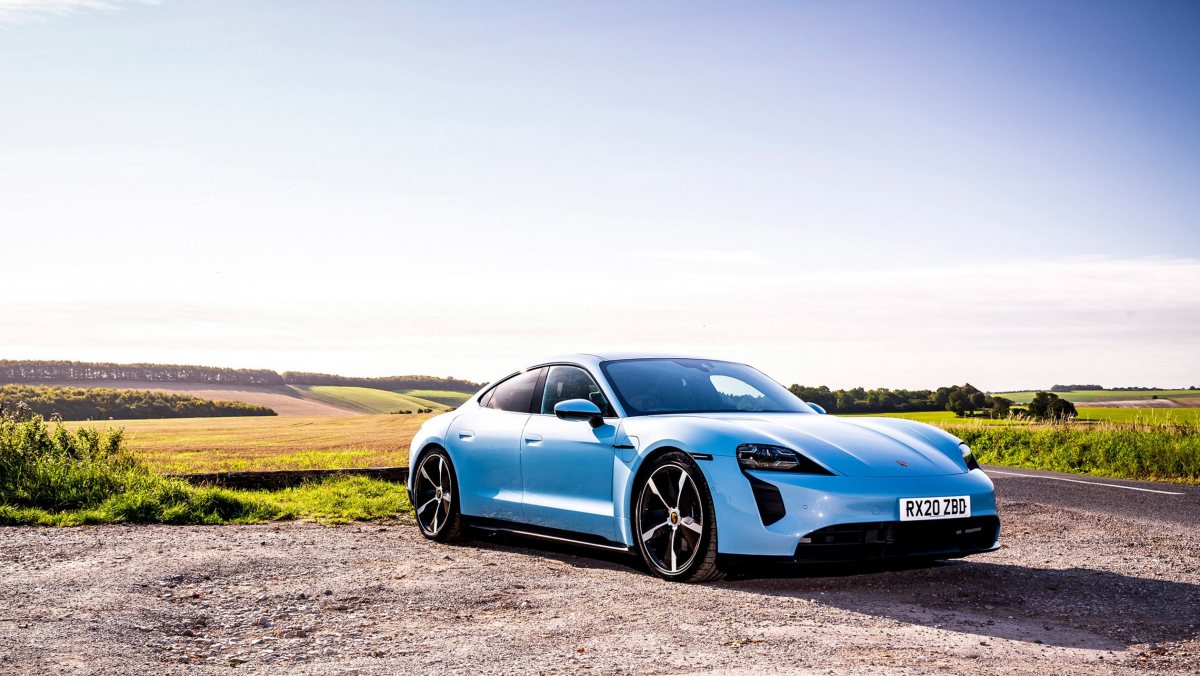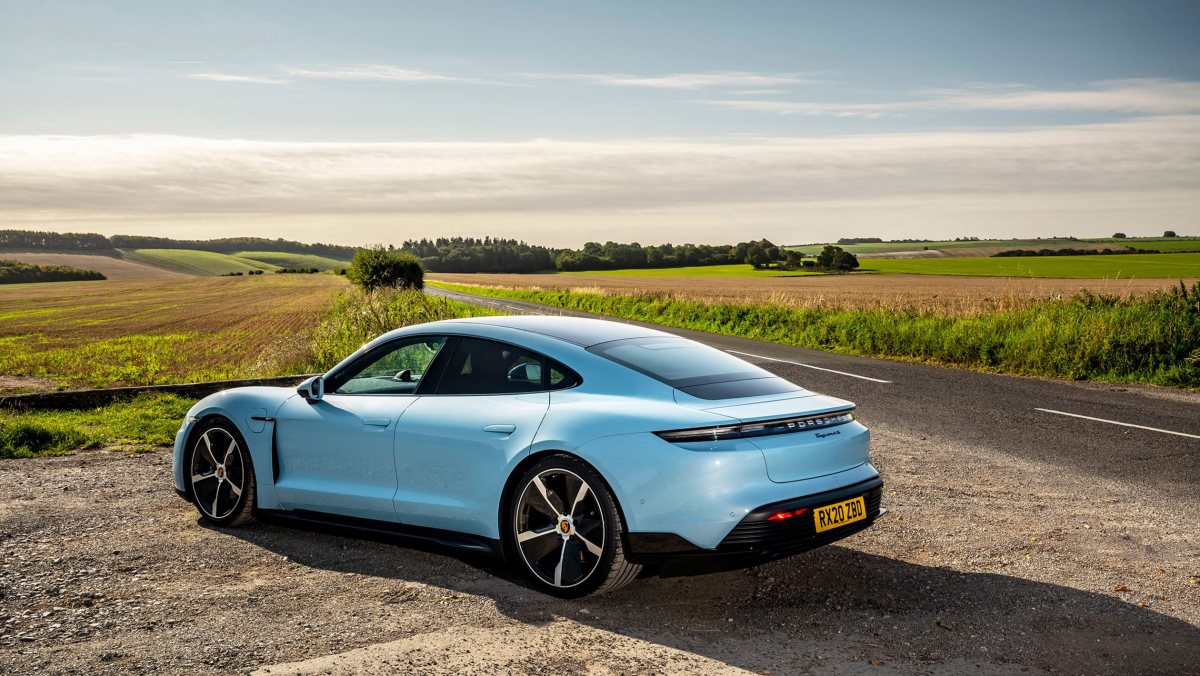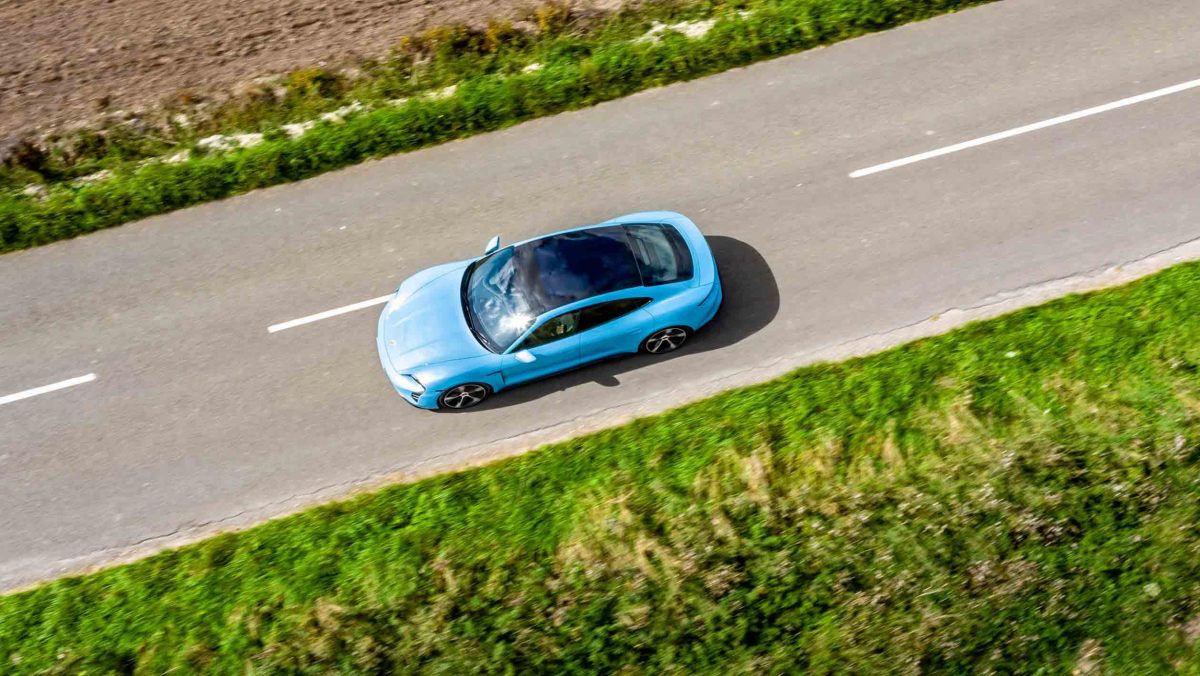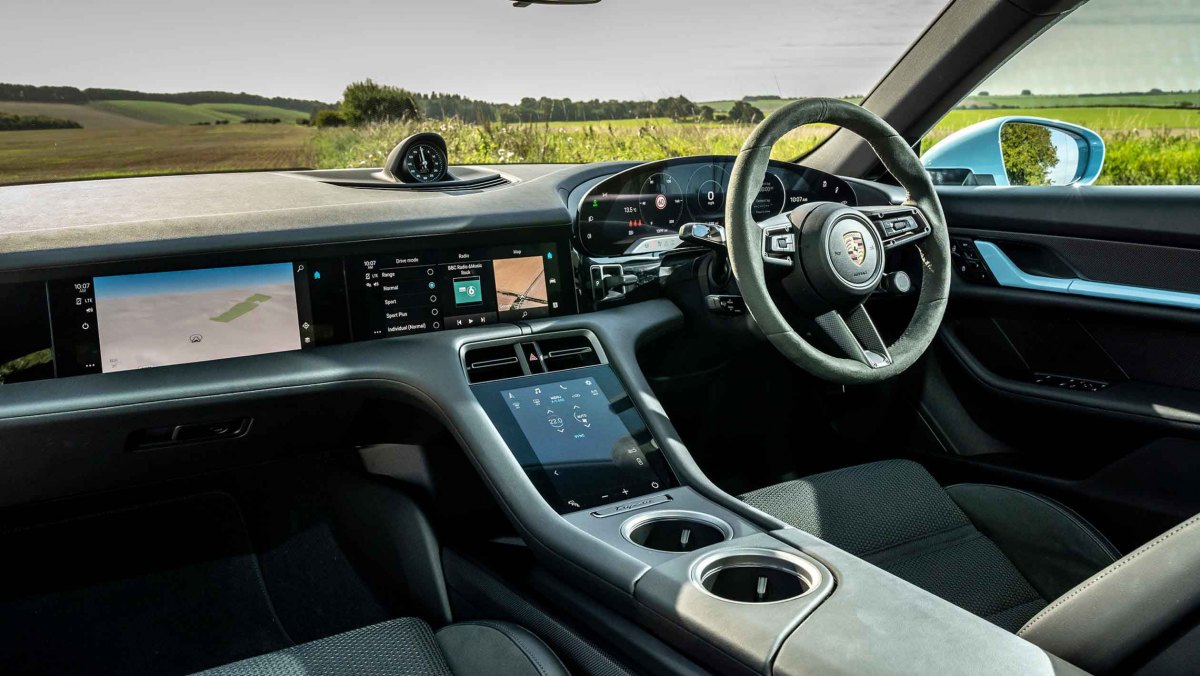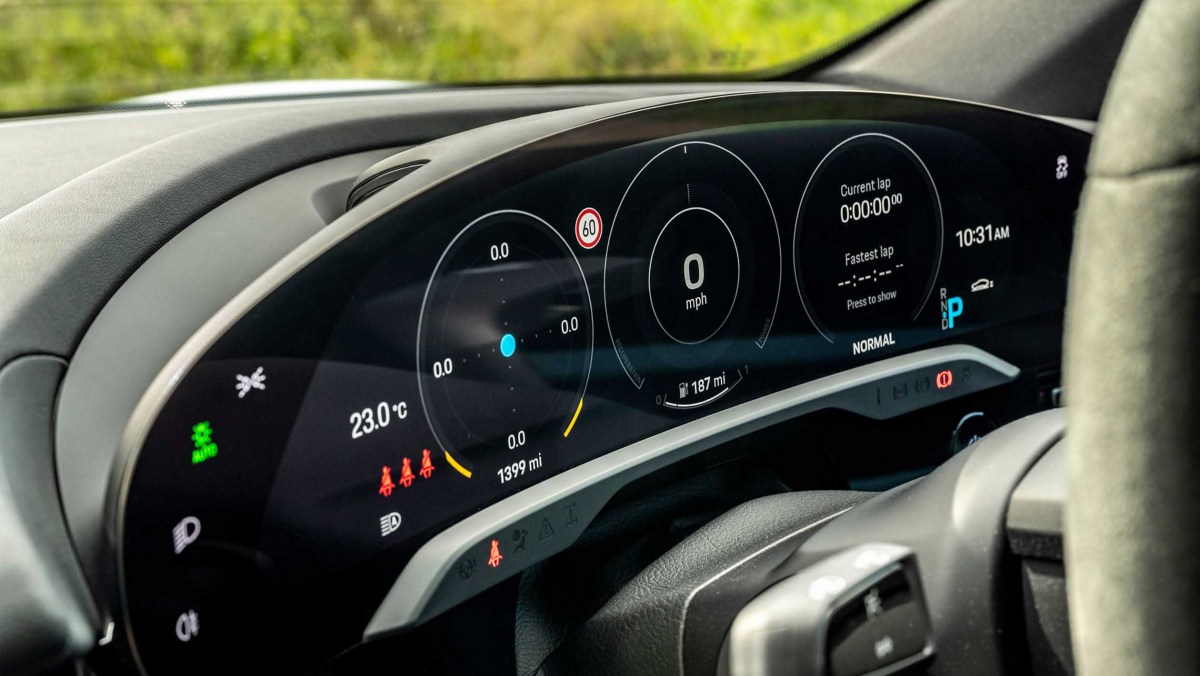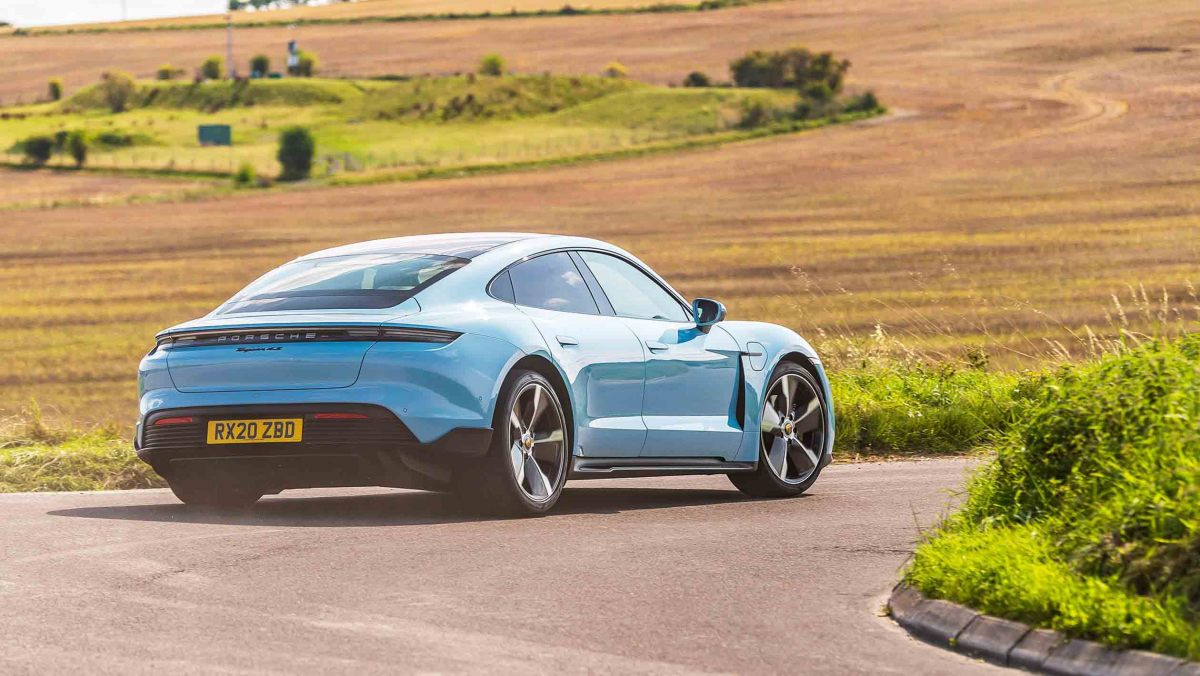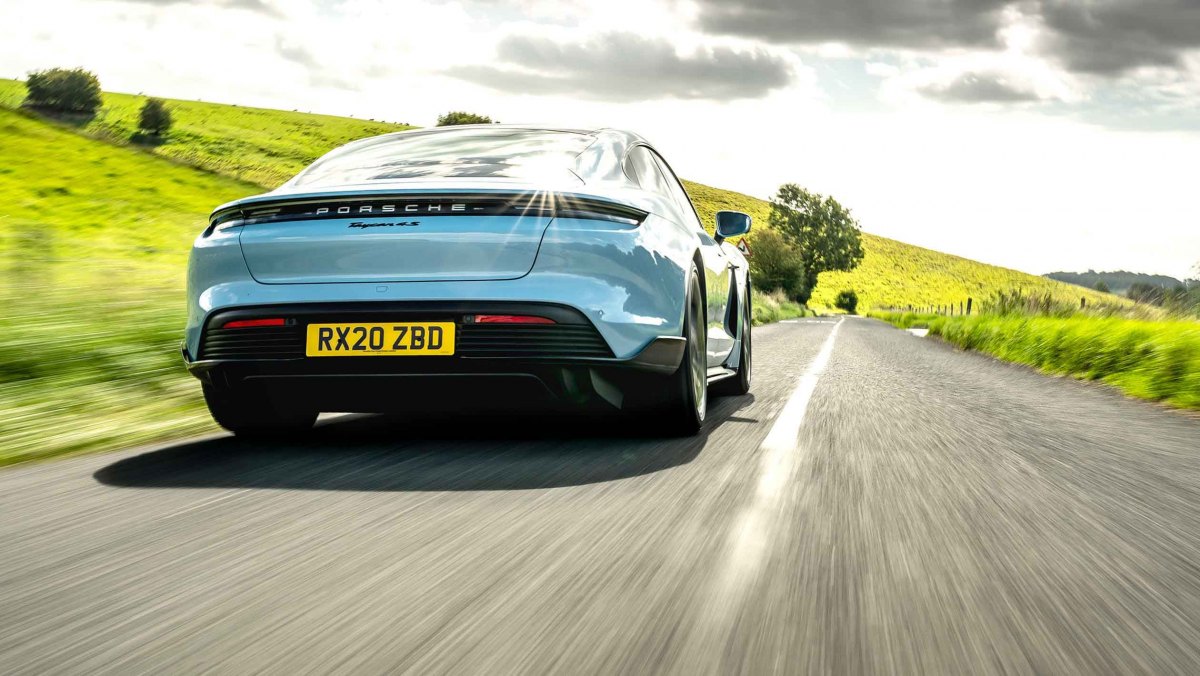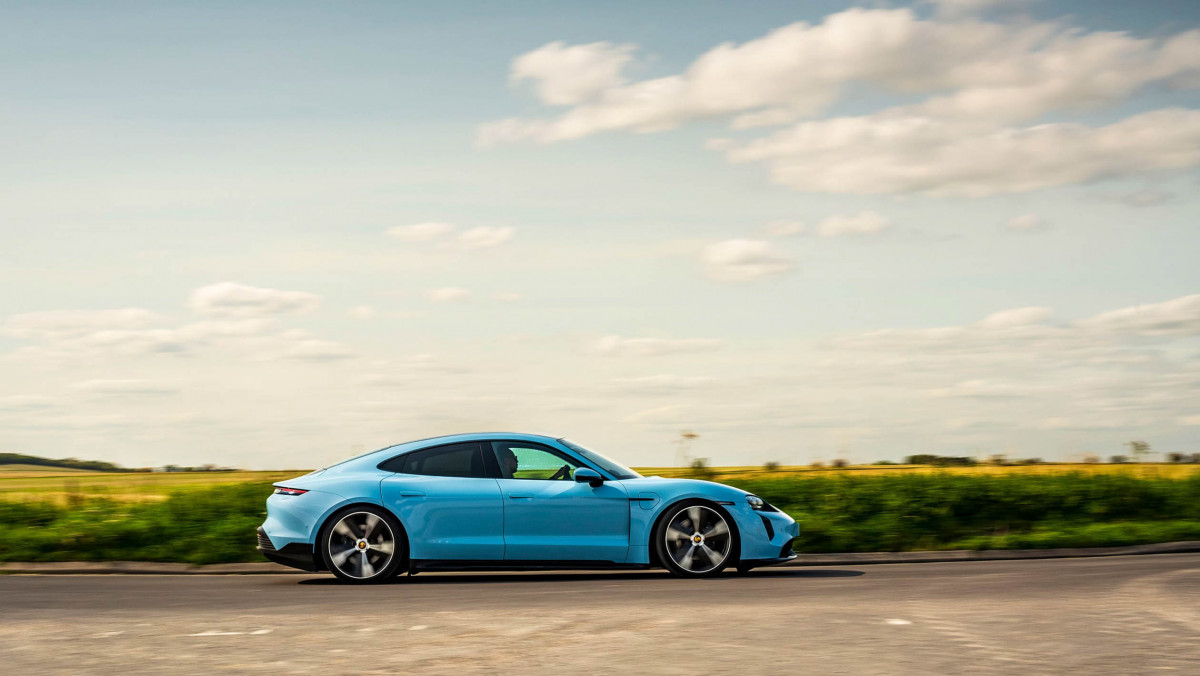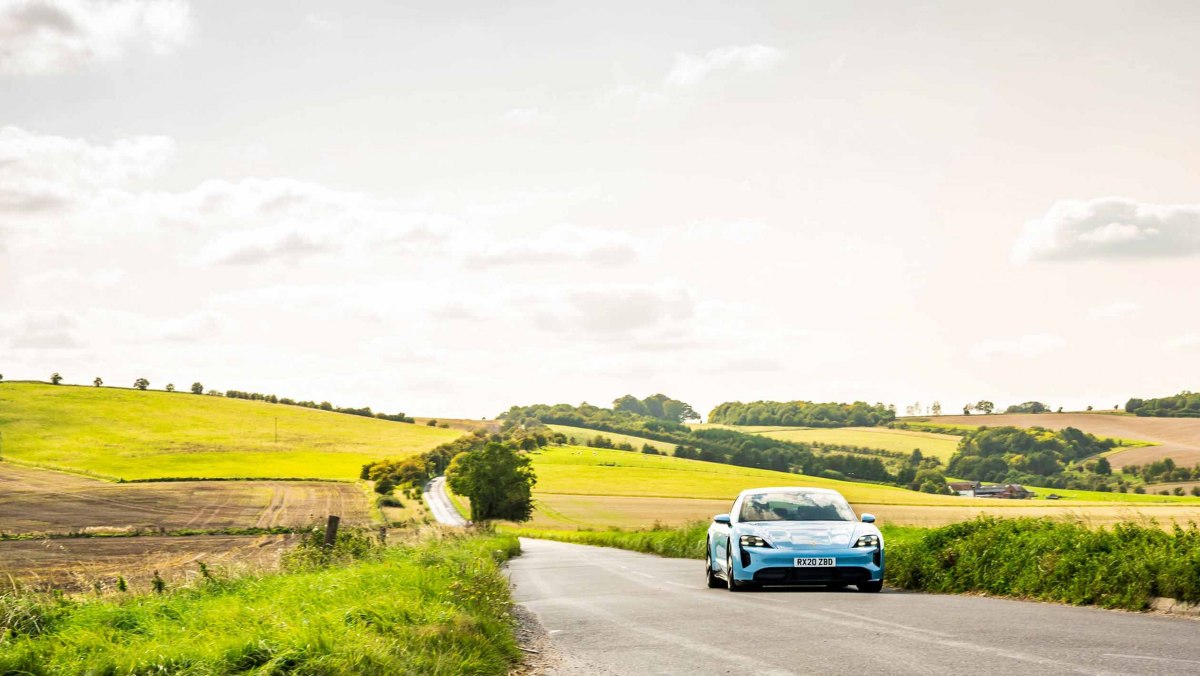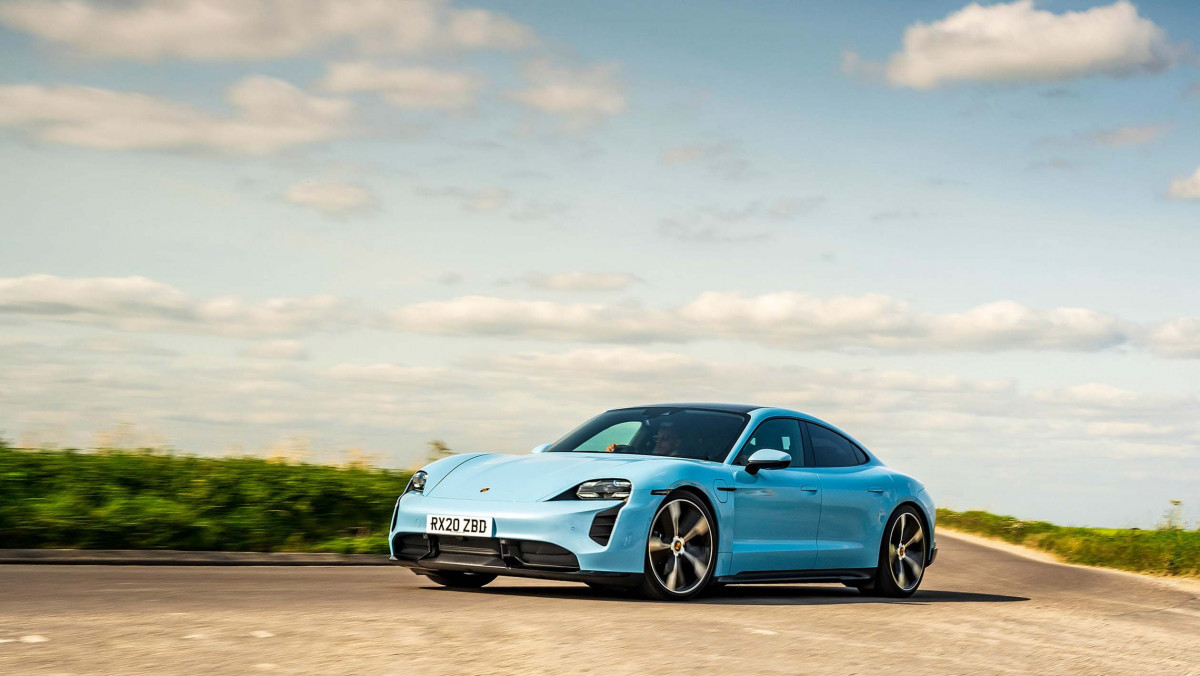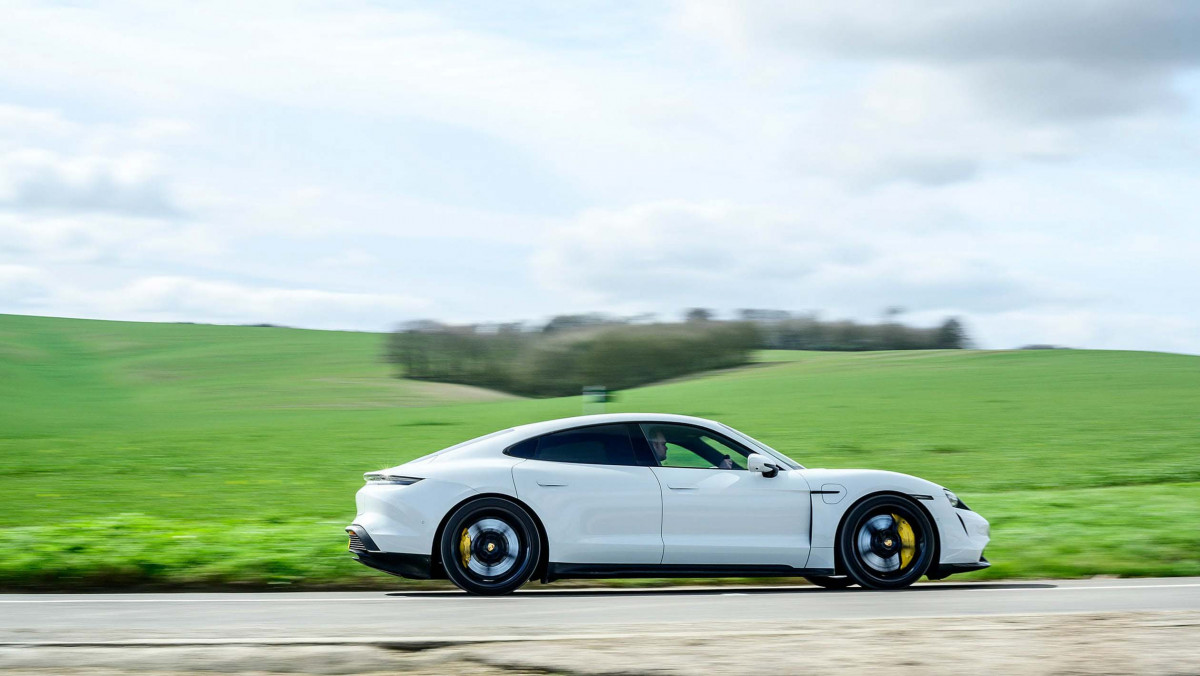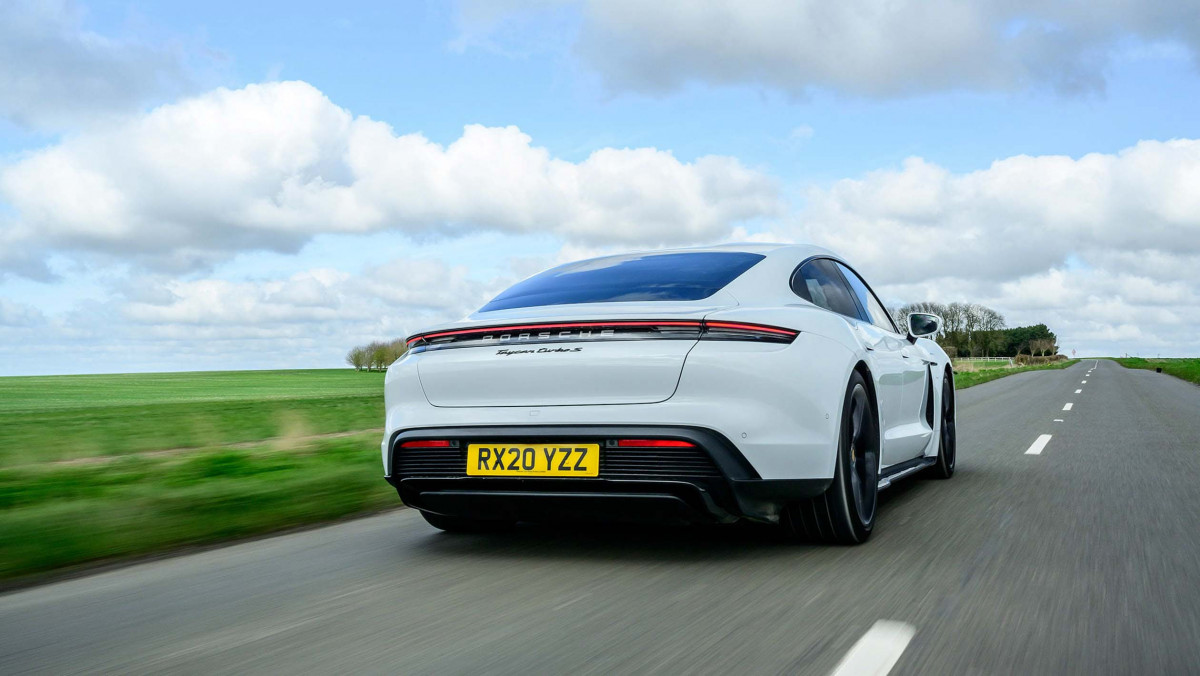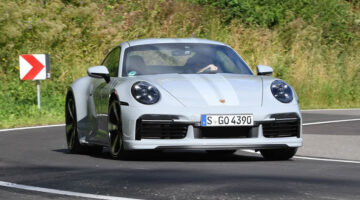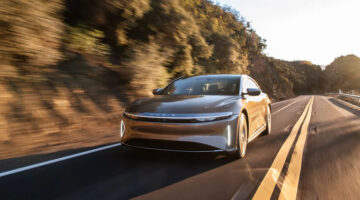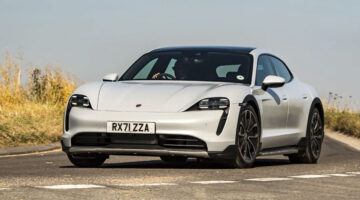The Taycan steers better, accelerates harder and is built better than the competition, but its weight ultimately undoes its claim as a sports car
| Astounding, reliable performance from Turbo models, superb build quality | |
| Huge weight, not especially roomy inside, top models are very expensive |
This is it then, Porsche’s first all-electric car and the first all-electric performance car from an established manufacturer that can go bumper-to-bumper with Tesla’s Model S. We’ve had some time now to digest the Taycan on road, and with a range now up to full strength from a basic single-engined $97k base model all the way up to the $195k Turbo S, it’s now time for the Taycan to start notching up some sales wins, not just online drag races.
That’s because the Taycan doesn’t just spearhead Porsche’s electric vehicle strategy – the Taycan Cross Turismo has now joined the range, before which the next Macan will go fully electric – but also provide the platform for Audi Sport’s electric vehicle livelihood in the new e-tron GT.
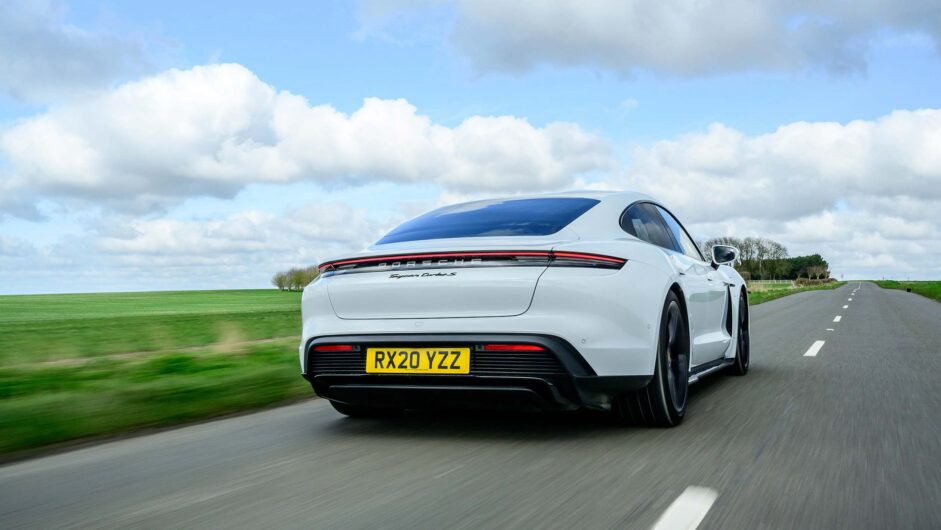
This is all a result of an investment strategy that will see Porsche spend €6billion on electric vehicles by 2022. The Taycan is the beginning of that investment, but it will continue with another new EV platform shared between itself, Bentley and Audi, all without getting in the way of its sports car development whose synergy with Porsche’s EV strategy still remains vague at best.
For now, it’s the Taycan’s job to appeal to buyers, and on the basis of initial sales it seems to be working. But for the enthusiast type, is it worth taking a punt on an EV now, or is it still too early in the game?
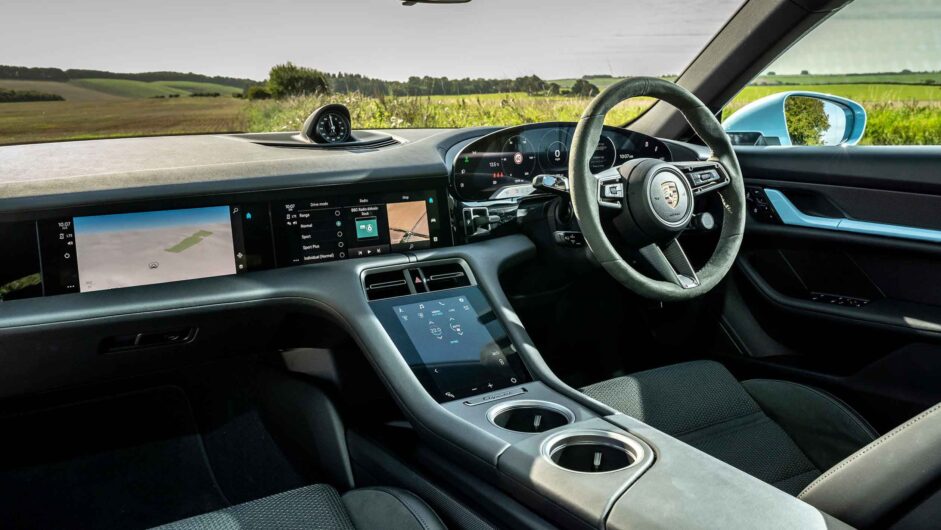
Prices, specs and rivals
Taycan models start at $98,254 for a basic rear-wheel-drive model with a standard 79.2kWh (net) battery pack, a single motor and a pretty basic specification that includes 19-inch wheels, partial leather trim, an 11-inch infotainment system, dual climate control, LED headlights and that’s about it.
Next up is the $116,170 Taycan 4S, which aside from the mechanical enhancements that we’ll go into more detail about later, throws in a diamond-cut version of the 19-inch wheel set, some brightwork around the windows, and again, that’s about it. Both the standard Taycan and Taycan 4S feature a 79.2kWh Performance Battery, but can be upgraded to the 93.4kWh Performance Battery Plus for $5627 and $5429 respectively.
Stump up $161,037 and you’ll get the first of the two Turbo models, bringing you the larger battery pack, upgraded adaptive LED headlights, 20-inch wheels, body-coloured accents around the exterior, upgraded leather trim on the dash and doors, a BOSE stereo and Porsche’s coated brake discs signified by its white calipers.
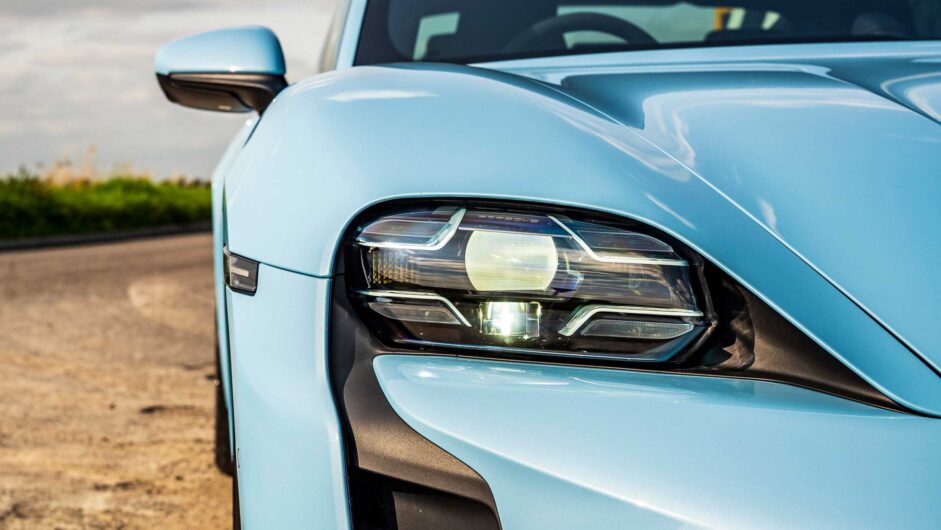
The $192,963 Turbo S tops the range, and swaps out the coated brakes for a carbon-ceramic set, plus fits 21-inch wheels, carbonfibre trim inside and out, standardises the leather-free interior option and swaps out the standard seats for a more heavily bolstered set. All of this equipment, plus a whole lot more, is able to be specified on all models from the options list too. It is, in fact, just about possible to specify a base Taycan to be more expensive than the Turbo S, essentially doubling it’s $97k base price.
While it’s only been two years since its launch, the premium electric car class is already expanding at an exponential rate. Audi’s (very) closely related e-tron GT shares a majority of the Taycan’s mechanicals, but packages them in a similarly sized, but differently styled package, slipping in between Taycan derivatives in terms of performance and price. The e-tron GT quattro kicks things off at just over $111k, with the RS e-tron GT starting from $153k.
Tesla has responded with an updated version of the Model S in three forms. ‘Long Range’ models offer a 663-kilometers estimated range and $116,726 price point, but it’s the Plaid and Plaid+ variants creating all the stir, with both featuring a new triple motor set-up that in the $182,053 Plaid+ will do 100kph in under 2.0sec, top out at 322kph and do over 837 kilometers on a charge. Peak power is estimated at over 1100bhp, and Tesla claims it will be the fastest-accelerating production car ever.
In typical Tesla fashion, these models are over 18 months away, and as always we’ll reserve faith in those figures until we have access to one in Blighty. When, or if, it is able to hit these benchmarks, we’ll listen.
- Engine, gearbox and technical highlights
All Taycans save for the entry-level model have an electric motor on each axle, a two-speed gearbox on the rear motor and flat battery pack running the length of the cabin. As mentioned above, there are two battery pack sizes, but they are the same physical size, which means the packaging on either option is the same.
It gets more complicated with motors, as each individual motor varies depending on the specific model, and in the case of the basic Taycan and 4S vary depending on the chosen battery size. All models also then have a second overboost peak power figure available during launch control.
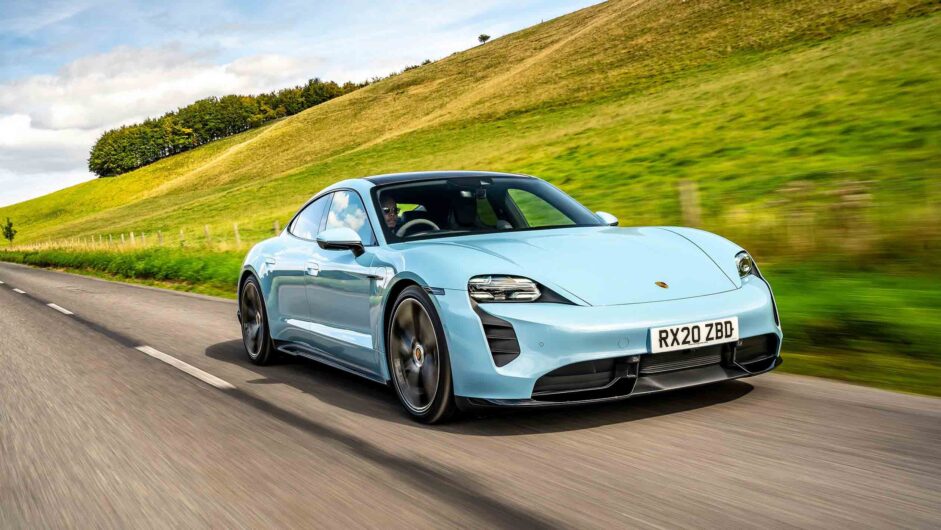
So, the base Taycan with its single rear-mounted motor produces a peak of 321bhp, which rises to 402bhp on overboost. Equipped with optional Performance Battery Plus, this rises to 374bhp and 469bhp.
The 4S’s figures are compound of both motors, which equate to 429bhp peak with 522bhp available on overboost for the standard battery, rising to 483bhp and 563bhp with the larger. Turbo models (mercifully, for the sake of this breakdown) are only available with the larger motor, peaking at 616bhp and 670bhp (on overboost) in standard form. Topping the range is the Turbo S, which has an identical 616bhp standard peak, but a higher 750bhp overboost figure.
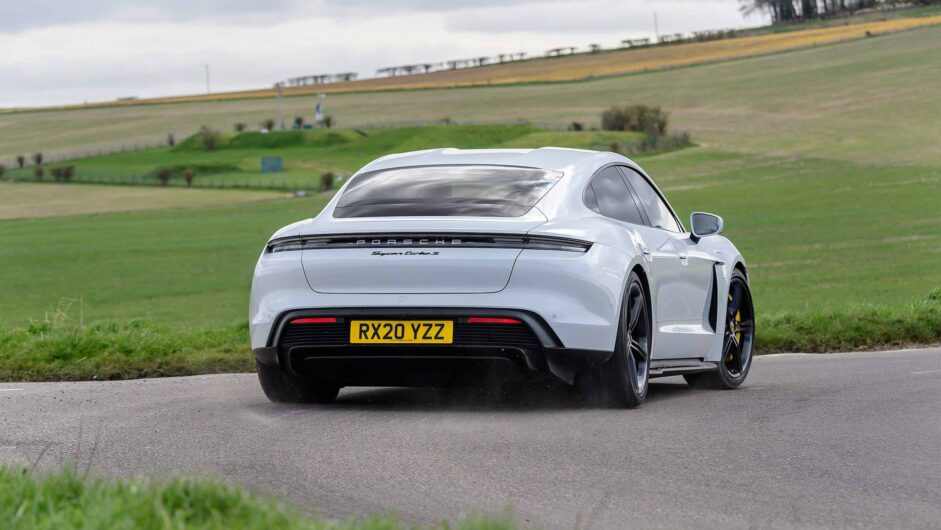
The Taycan has the best drag coefficient figure of any Porsche road car at 0.22 and was the first production vehicle to have an 800V electrical system, where others make do with a 400V set-up. It’s this higher 800V rating that allows the Taycan to deliver its consistent performance both against the clock and when at a charging station – where its battery can be charged from five per cent full to 80 per cent full in under 23 minutes on a 270kW charger. It will take nine hours to charge the battery from zero to 100 per cent full on a 11kW charger.
Underpinning the Taycan’s new J-Platform is Porsche’s 4D Chassis Control, which incorporates a three-chamber adaptive air suspension and damper system, Porsche’s dynamic anti-roll bar technology (PDCC Sport) and its latest torque vectoring system. A selection of 21-inch wheels are available, all fitted with a 265/35 tyre on the front and a 305/30 on the rear.
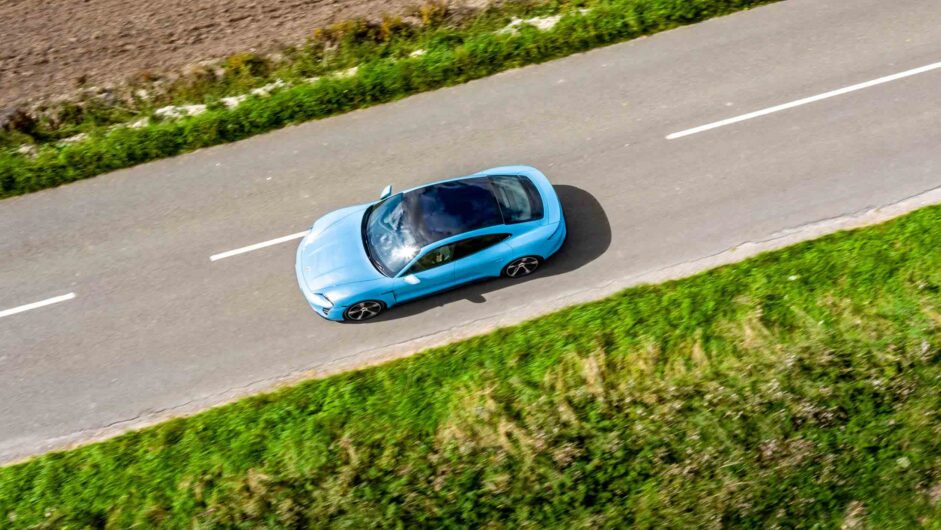
Porsche’s carbon-ceramic brakes are standard on the Turbo S, with ten-piston calipers and 420mm discs on the front, with four-piston items on the rear clamping a disc that’s only 10mm smaller in diameter. Porsche claims the high recuperation system means that 90 per cent of everyday braking can be achieved without using the brakes, relying instead on the regen force when you lift off.
Each of these high-function chassis devices is down-specced as you get closer to the standard RWD Taycan, which runs on coil springs, passive dampers, and does without active anti-roll and all-wheel steering.
Manufactured from a mix of aluminium and steel, the Taycan’s body sits on a chassis that incorporates an aluminium battery tray that also forms part of the safety structure.
- Performance and 0-100 time
Acceleration times vary greatly depending on model, but aren’t battery pack dependent despite unlocking greater power figures. Standard Taycans will therefore reach 100kph in 5.4sec, with 4S models dropping that down to 4.0sec and the Turbo another notch down to 3.2sec.
The headline figures belong to the Turbo S though, which will do the deed in 2.8sec, a frankly ludicrous figure in a car that weighs 2295kg (all Taycans have a slight weight issue, with even the lightest base Taycan with the lower-capacity battery pack still topping 2035kg). Zero to 160kph arrives in 6.3sec, with the quarter mile dispatched in 10.8sec. Its top speed, however, is capped at 257kph.
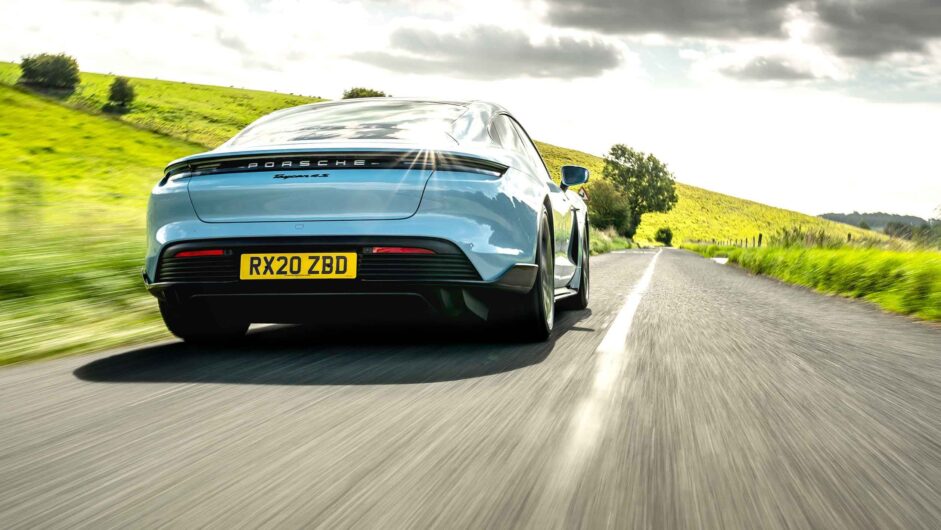
These figures are also broadly consistent regardless of weather conditions, and not just available once, after some time-sapping battery preconditioning. Simply wait for the batteries to reach operating temperature of around 50deg C (achieved after around 15-20 minutes of regular driving), put your left foot on the brake, right foot on the throttle, wait for launch control to engage… and go for it. Up to ten consecutive times.
- Ride and handling
Initial impressions are extremely good. The seating position is low, the steering wheel comes straight out towards you, and the scuttle is low, with the front arches peeking up just like they do in a 911. That initial turn of the steering wheel is also familiar, Porsche’s exhaustive work to perfect the electro-mechanical steering rack on its sports models yielding excellent results here.
Other inputs are initially recognisably ‘Porsche‘ in feel, too, with weight to the pedals and a resolute firmness to the damping that immediately makes the Taycan feel very different to a Tesla Model S.
But it’s not as quiet as you would perhaps expect an electric car to be. There’s noticeable wind noise from the mirrors and around the frameless doors, and the tyre roar is on par with a 997 Turbo, especially on the 21-inch wheels that you’ll want to specify.
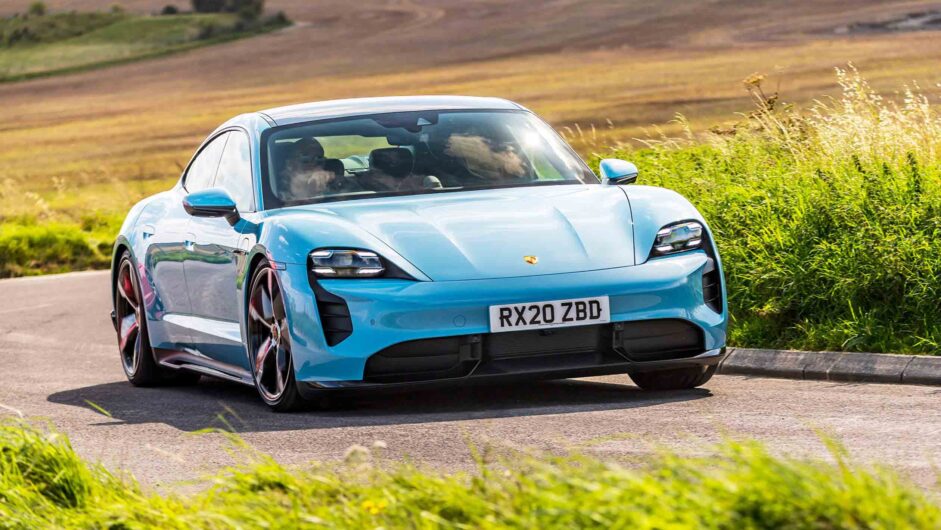
What you don’t notice, and where the Taycan lays down its marker as a very different approach to driving, is the effortless momentum achieved when driving through a town, on a motorway and even along a more interesting section of road. The way in which it delivers its power and torque is borderline undetectable, speed building with no real effort or input required from the driver. With the naff sport sound generator turned off you’re hard pushed to know if you’re travelling at 65kph or double that speed. Find yourself on a long drive, set the cruise to your prefered speed and as a driver you’re nearly as removed from the process of driving as any passengers. Little wonder that those who find driving a bore and a chore enjoy the detachment offered by the EV driving experience.
But a Porsche must deliver a driver experience above and beyond the accepted norm, and to a high degree the Taycan offers just that. Its ride and body control are on another level compared to a Panamera, let alone a Tesla Model S. There’s a tautness to the ride and a level of damping from the PASM chassis that does an admirable job of masking the Taycan’s weight, allowing it to flow with an unexpected precision.
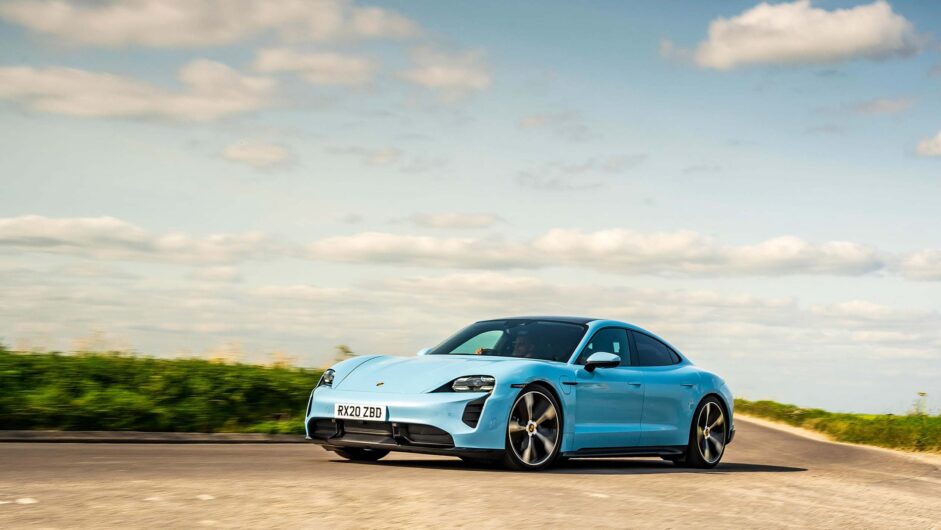
Away from the headline acceleration figures the Taycan feels so much more than a point and squirt performance car. You sense there’s an inherent dynamic level within it that is above that of any other electric car on sale. The steering is too heavy, no matter the scenario, but it’s remarkably accurate, if lacking in any detailed feedback, and you sense there’s a strong dynamic car within the Taycan’s DNA.
But. No matter how much finesse and precision Porsche has been able to engineer into the Taycan, it just can’t escape the impact 2.3 tons of mass has in a sports car at your disposal, especially in top-tier Turbo S form. The rate of acceleration is so intense, so unrelenting, that you’re quickly headbutting speeds that would have a Lamborghini Huracán scratching its head – until you need to stop or steer. Even the Turbo S’s 420mm carbon-ceramic discs and ten-piston calipers can’t quite keep up with the sheer momentum at play. On anything but smooth, predictable surfaces the lateral grip also falters, making the Taycan Turbo S almost feel overpowered like an old-school American muscle car.
Of course, to reach this point you have to be travelling at quite astonishing speeds, but the Turbo S reaches them so easily, it’s almost impossible not to reach the limits of the brakes and chassis with worrying ease. Provoke the Taycan, however, and there is an undeniably enjoyable balance to exploit, especially in low-grip situations. Add in the electric motor’s instant response, and it has an almost Lancer Evo-like playfulness exaggerated by Porsche’s torque vectoring and the over-powered rear axle. It really is possible to make the Taycan dance for its supper.
- L/100km and running costs
And supper it does enjoy. At 2.3 tons and the sheer neck-snapping speeds it’s capable of, the Taycan will chew through tyres and brakes faster than it would care to suggest. It’s also not the most efficient electric car, as despite Porsche’s 450-kilometers or so range prediction, driven with any enthusiasm you’ll be lucky to crack 322 kilometers – throw in a launch control function or two, and maybe some overtakes and that’ll drop to 257-290 kilometers.
The Ionity charging service partnered with Porsche is superb, however, with frankly shocking rates of charge capable from its DC charging. The issue, aside from availability, is cost. To charge at the full 200kW rate, the current rates sit at 67p/kWh, making 257 kilometers worth of charge cost roughly $91, or about the same as our old Fast Fleet Aston Martin Vantage.
Home charge off-peak and this cost will inevitably be far lower, but with such a limited range any long journeys will likely need a mid-trip charge, and if you’re spending $195,000 on a Porsche, it’s unlikely you’ll be willing to sit around at motorway services for an extra three hours waiting for the cheap charge point. In this regard, Tesla’s supercharger network still has all others resolutely licked.
- Interior and tech
Taycans can be configured as a four- or five-seater, but despite quite a large footprint and no combustion engine, is actually quite cramped inside. As with the mechanical package, there’s huge variation between models, basic versions receiving part-leather trim and basic plastic trim elements that walk the line between clean and austere.
Pay more money and you can lux things up with the likes of 18-way electric sports seats, rear-axle steering, the Sport Chrono package and Porsche Electric Sport Sound, all of which are standard on the Turbo S.
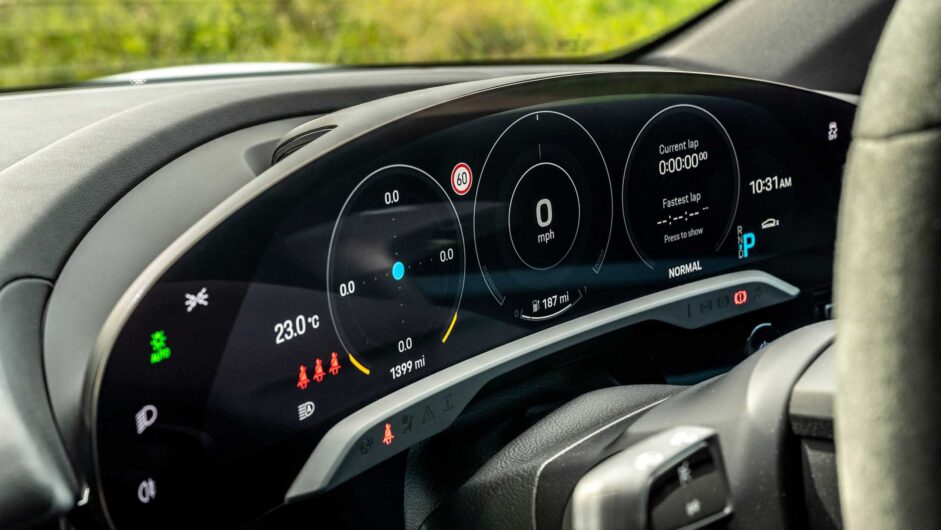
The interior’s approach is otherwise typical Porsche, but with a fresh simplicity exemplified by the curved driver information screen that replaces the typical roundels. The floating instrument binacle features a five-dial layout, but like the 911’s the outer two dials are obscured by a three-spoke steering wheel that’s a further evolution of the 918 Spyder’s. Two further screens occupy the dash and console, with a further display positioned in front of the passenger optional.
- Design
The Taycan’s concept car-like design was unsurprisingly driven by the Mission-e concept, a model that on first impression is superbly reimagined for production – especially in certain colour combinations. The result is a typically Porsche design, with clean, voluminous bodywork bereft of too many sharp creases or intersecting lines.
The compact LED headlights and air-curtain graphic superbly references Porsche’s heritage models, but gives the Taycan a distinctive and contemporary look, while the razor-sharp rear lighting, flush handles and clean, confident glasshouse all look expensive and superbly executed.
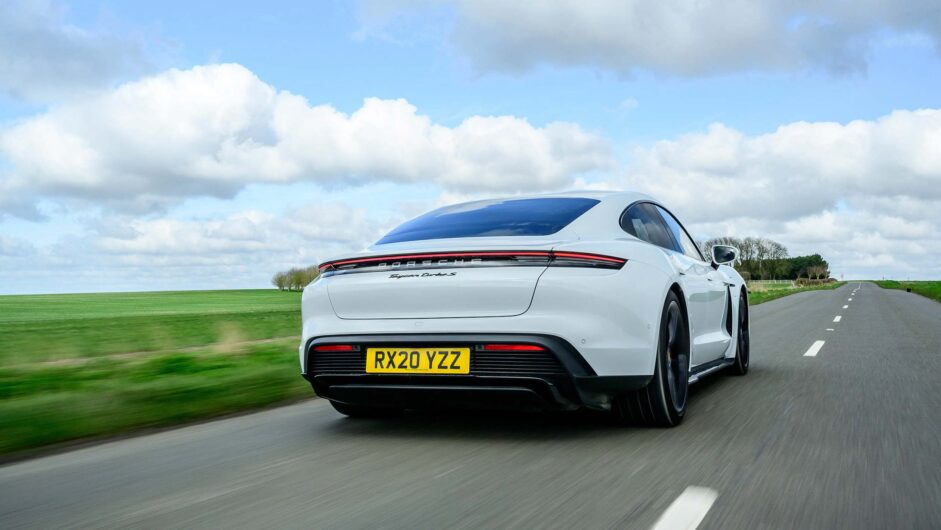
If we’re being picky, it is a car that can be colour sensitive, but is damaged more by smaller wheel sizes, needing the full 21-inch options to really carry its curves and haunches. It also, just, looks a tad too dense around the rear screen. The concept’s rear screen actually separated itself from the rear haunches, creating a small slip of clear air that’s missing on the production car, which from certain angles, makes it look a tad frumpy.
Still, the Taycan has done a superb job of translating the concept’s design to production, and compared to the dated Model S and fussy Audi RS e-tron GT, is superbly judged.
This article originally appeared at evo.co.uk
Copyright © evo UK, Dennis Publishing

